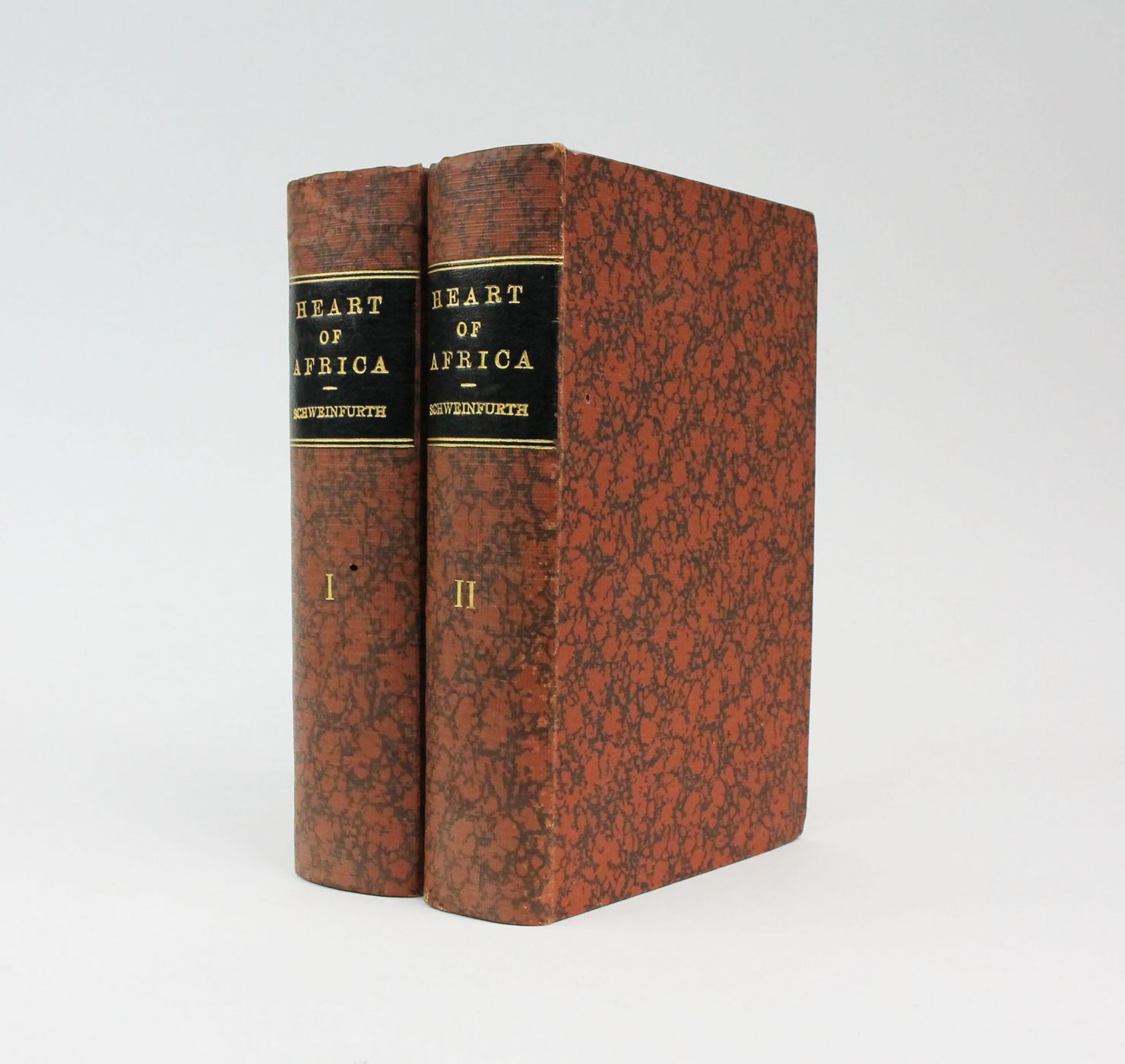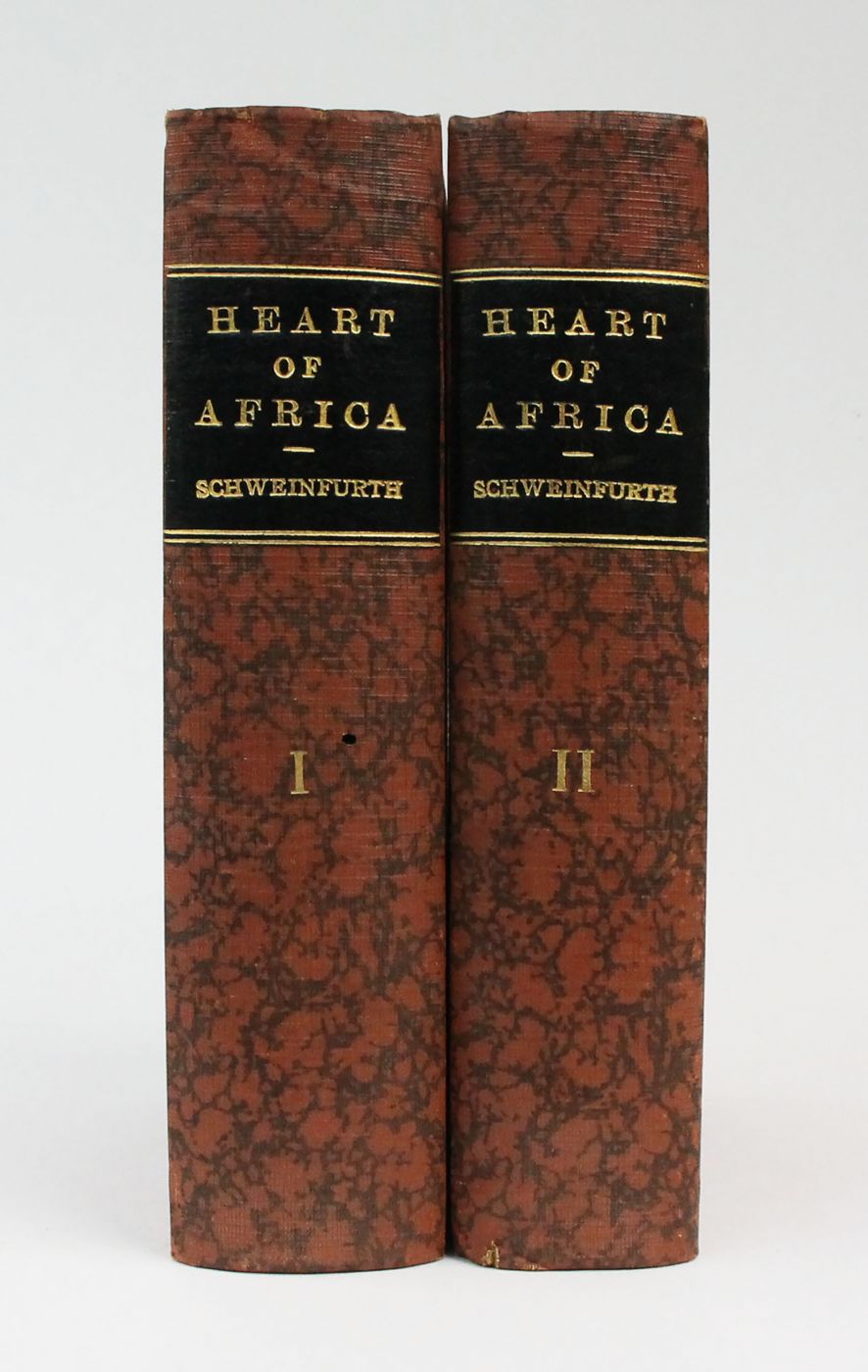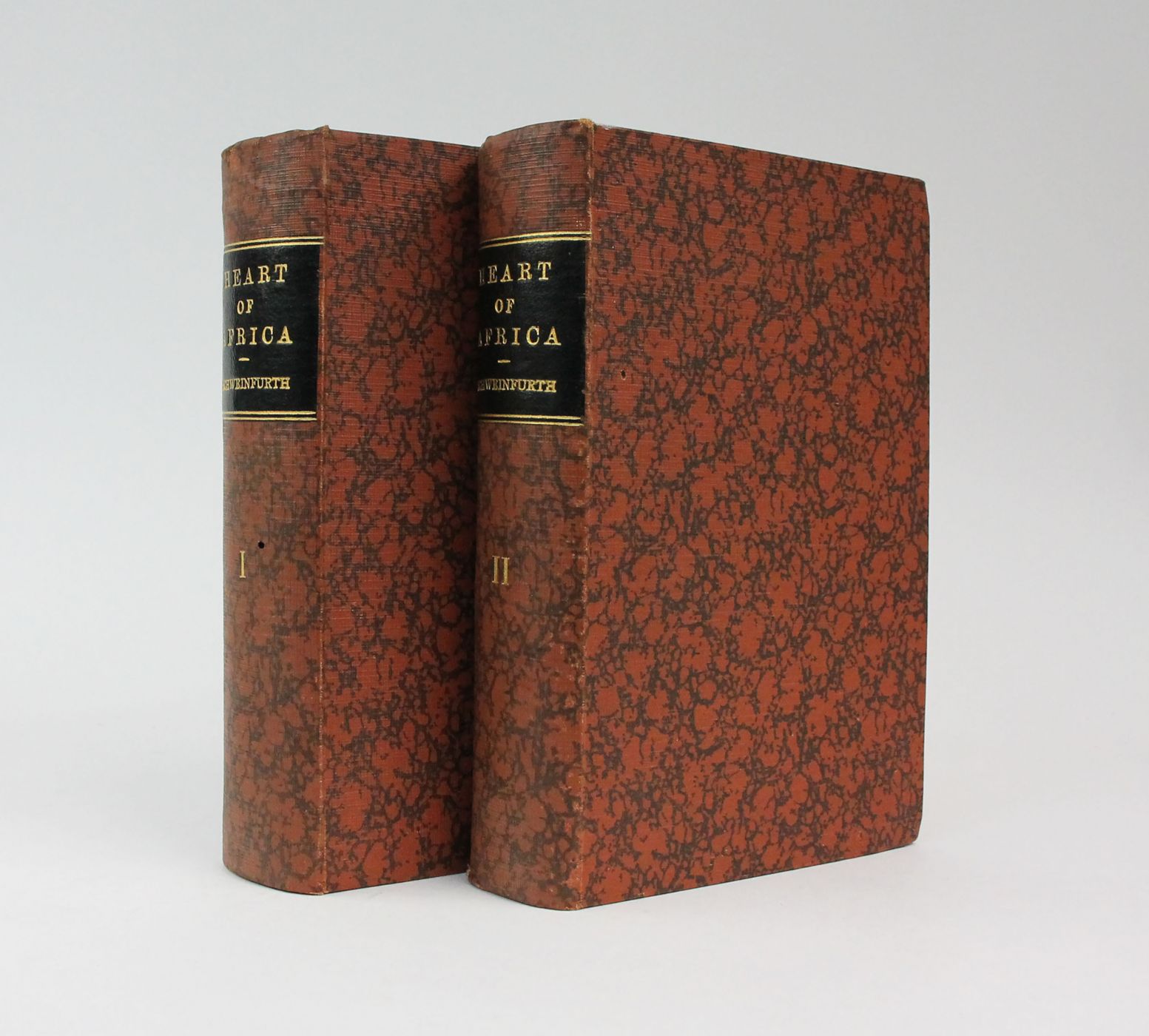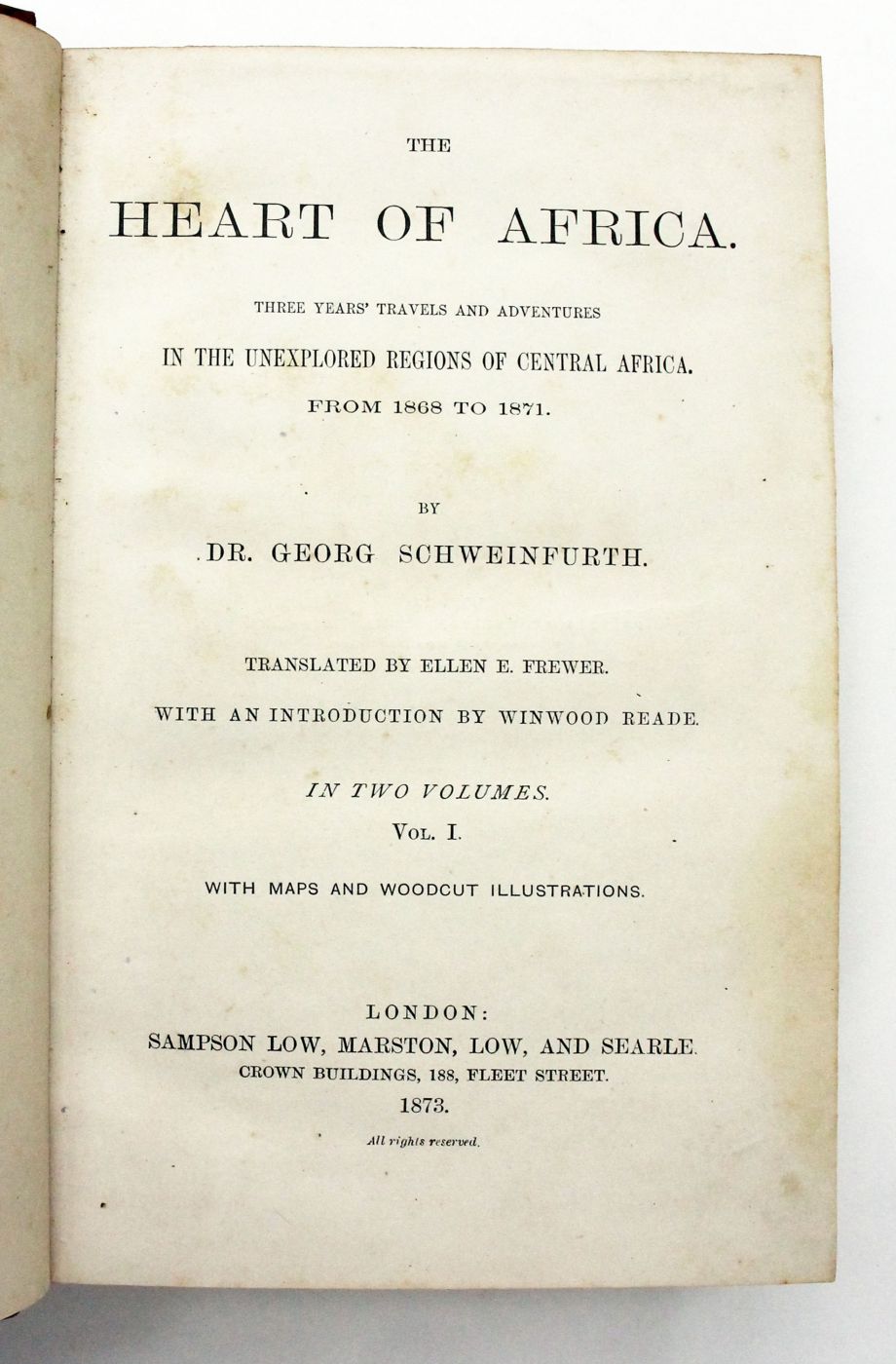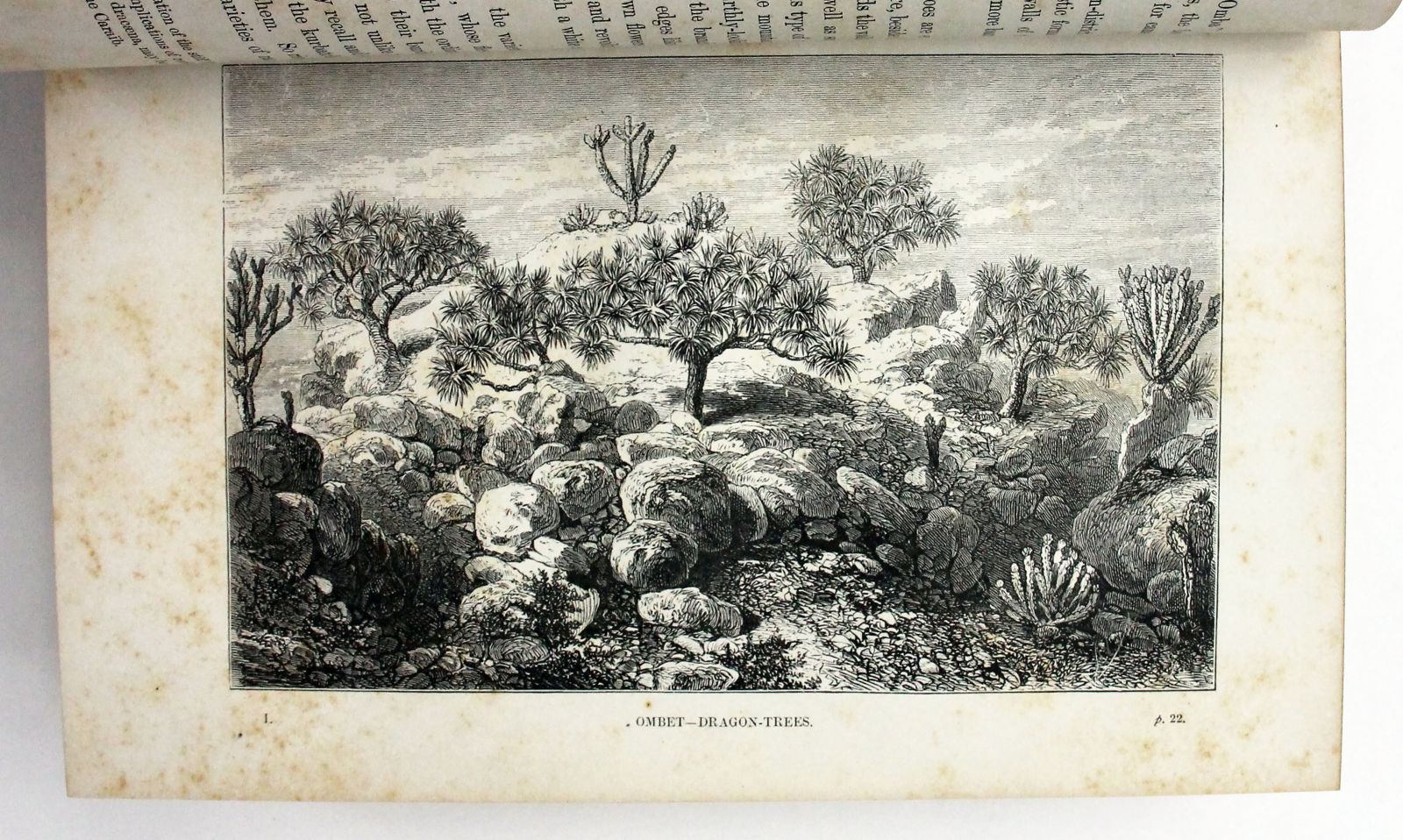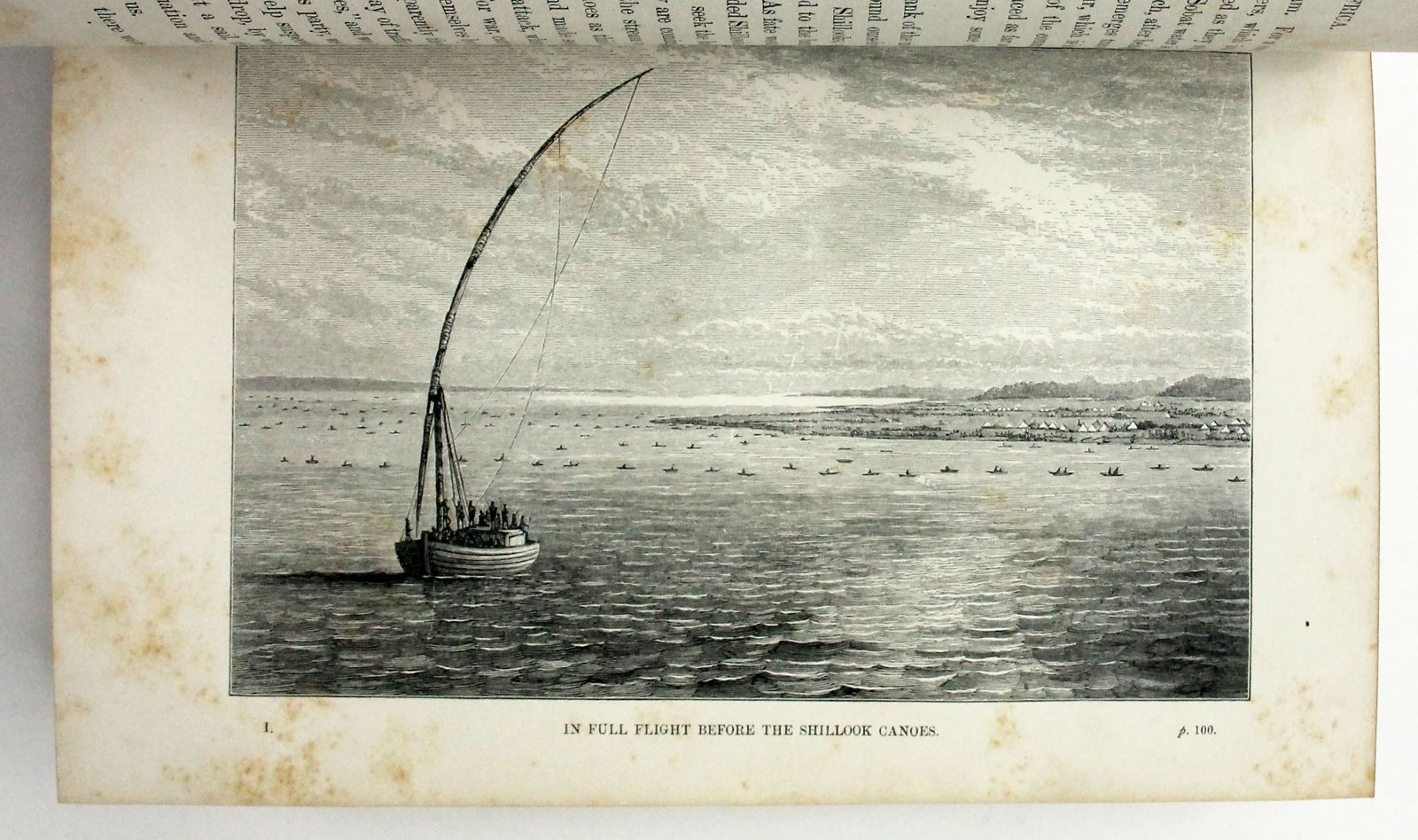THE HEART OF AFRICA. Three Years' Travels and Adventure in the Unexplored Regions of Central Africa from 1868 to 1871.
First edition. 2 vols. Early twentieth-century textured cloth with black morocco title labels lettered in gilt. Illustrated with a wood-engraved frontispiece to each volume, 23 further wood-engraved plates, one tinted lithographic plate, numerous wood-engravings in text, and 2 maps (one folding). A very good set, the bindings square and firm with a little minor rubbing to the extremities, a single insect hole to the spine of volume one and another to the bottom corner of the lower board, one each to the upper and lower boards of volume two, and two to the bottom corners. The contents with the bookplate of Albert Ruskin Cook to the front pastedowns, his ink inscription to the front free endpapers, scattered foxing (heavier to some plates), two tears to the front free endpaper of volume two, the folding map in volume one with a little loss to the left-hand margin and a minor paper repair to the rear, a small amount of worming affecting the margin at the gutter of pp.531-559 in volume one, the rear inner-hinge of volume two, and with a couple of other tiny dots elsewhere, are otherwise in good order.
Georg August Schweinfurth (1836-1925) was educated at the Universities of Heidelberg, Munich, and Berlin, where he specialized in botany and palaeontology. "An 1862 specimen-collecting trip up the Nile River to Khartoum won him support from a Berlin scientific institute for more extensive exploration in the equatorial area of Africa, in what is now the Central African Republic and the Democratic Republic of the Congo. He sailed south from Suez in the late summer of 1868 and reached the Nile via an overland route from the coast. From Khartoum he continued south in January 1869, then joined a group of ivory traders heading west through regions inhabited by the Dyoor, Dinka, Bongo, and Niam-Niam tribes; later, he reached the unknown kingdom of the cannibalistic Monbuttoo, and on 19 March 1870, discovered the Uele River, which would prove to be an important tributary of the Congo...The record of his journey was published in an English translation in the same year it appeared in German. As a trained botanist and accomplished artist, Schweinfurth expanded knowledge of the flora and fauna of central Africa as well as the ethnology of its inhabitants. He was the first European to encounter the Akka Pygmies of East Africa, settling the question raised by Homer and Herodotus of the existence of dwarf races in Africa and the Mittoo and Loobah tribes between the White Nile and the upper Congo, among whom women practice lip enlargement to enhance their appearance" (John Delaney, To the Mountains of the Moon). Winwood Read's introduction to the present volume describes Schweinfurth and Sir Samuel Baker as the only two explorers to have successfully penetrated Africa from north to south. A "true classic of African exploration" (Czech, pp. 248-9). Sir Albert Ruskin Cook, CMG, OBE (1870-1951) was a British medical missionary in Uganda, and the founder of Mulago Hospital and Mengo Hospital, the oldest hospital in East Africa. Cook was unusual amongst medical missionaries due to his efforts to train Africans to become skilled medical workers, as typified by his and his wife Katharine's (1863-1938) opening of a school for midwives at Mengo, and their production of a midwifery manual in Ganda, the local language. [Gay 2568].
Stock code: 18083
£575
Published:
Category
Non-fictionMaps
Travel / Exploration


